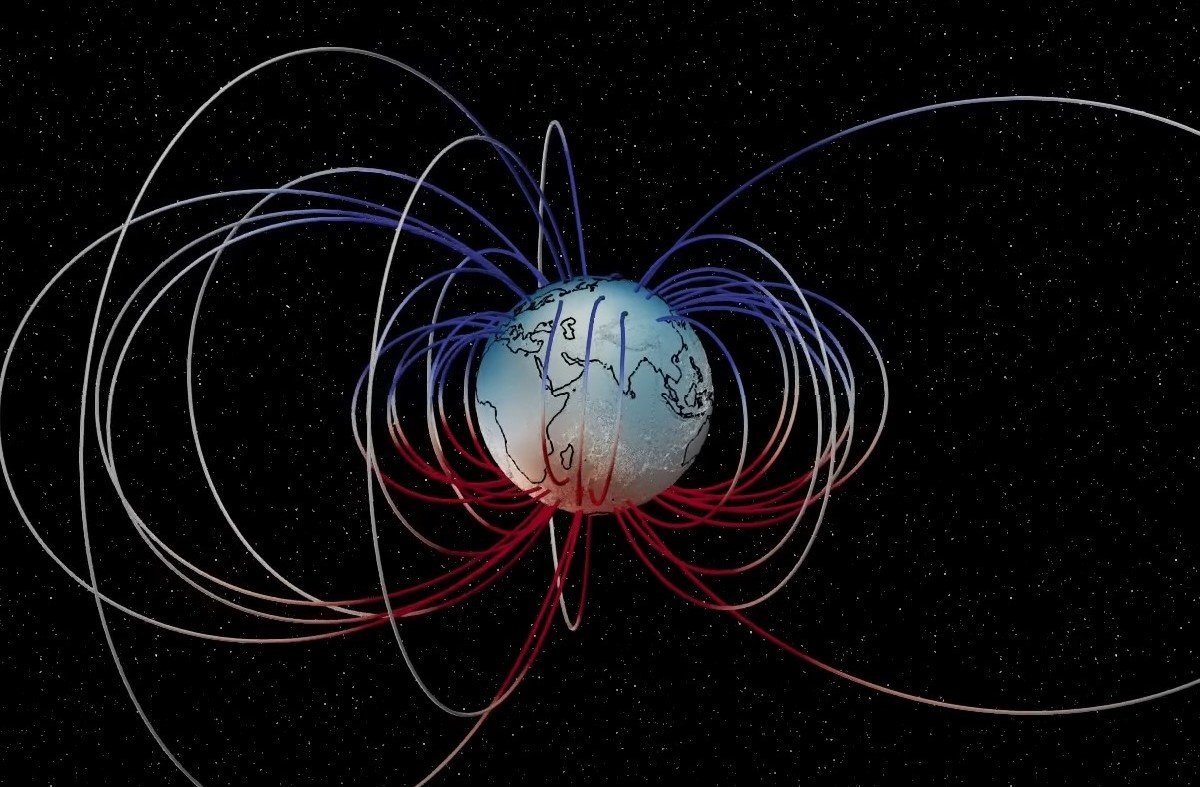The Laschamp event occurred about 41,000 years ago, when the Earth’s magnetic field reversed and weakened, losing almost 95% of its strength compared to current measurements. Scientists believe that inversion during this period produced a characteristic sound that could not be recorded due to a lack of technology at the time.. Now a group of researchers decided to recreate this sound.
A team of researchers from the Technical University of Denmark and the German Earth Sciences Research Center used data from the European Space Agency’s (ESA) Swarm mission to deepen the understanding of this historic Earth event. Based on a series of scientific data, They managed to create a ‘sound visualization’ that resembled the sound of this event thousands of years ago
By mapping the movement of Earth’s magnetic field lines during the Laschamp event, researchers were able to create stereo sound with sounds reminiscent of scenes in horror movies. According to scientists, They used recordings of natural sounds, such as creaking wood and falling rocks, to produce the sound.; The result looks like an alien radio broadcast.
“The sound of the Earth’s magnetic field, the first version of magnetic field sonification produced by Swarm data, was initially played through a 32-speaker system installed in a public square in Copenhagen; each speaker represented changes in the magnetic field at different locations. A statement from the ESA explains: “Worldwide over the last 100,000 years.
Earth’s magnetic field
The first version of the audio was played through 32 speakers in a square in Copenhagen, Denmark. Information collected by the Swarm mission It is used in many studies on the Earth’s magnetic field.not just to recreate sounds. The satellite’s equipment can also be used to study the mantle, crust, oceans, ionosphere and magnetosphere.
During the Laschamp incident, The planet’s magnetic poles shifted for a time, which may have had an impact on the planet’s primitive inhabitants. For example, the inversion may have triggered many climate changes due to the impact of cosmic rays on the ozone layer. Finally, researchers will continue to study the effects of the Earth’s magnetic field.
“The soundscape was created using recordings of natural sounds like creaking wood and falling rocks, mixing them with familiar, strange, almost alien sounds. “The process of transforming sounds with data is similar to composing music from one note,” ESA adds.
Do you have any questions? Tell us on our social networks and get the opportunity to listen to the Solar System playlist created by NASA. Until next time!
Source: Tec Mundo
I’m Blaine Morgan, an experienced journalist and writer with over 8 years of experience in the tech industry. My expertise lies in writing about technology news and trends, covering everything from cutting-edge gadgets to emerging software developments. I’ve written for several leading publications including Gadget Onus where I am an author.











